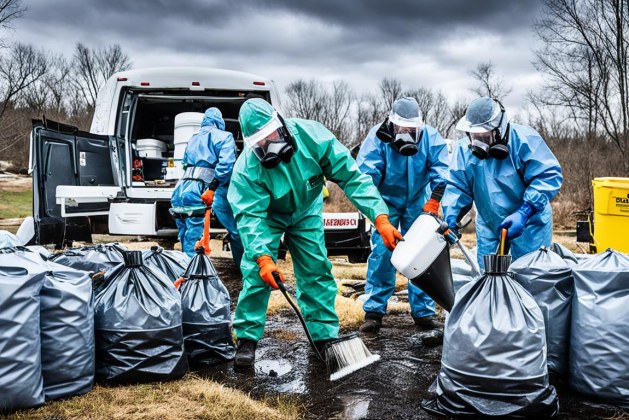Biohazard cleanup is a crucial service for handling hazardous materials like blood, bodily fluids, chemicals, or other potentially infectious substances. Situations requiring biohazard cleanup often stem from traumatic events, accidents, or contamination. While the cleanup process is essential for safety and health, it can also be costly. Understanding how insurance covers biohazard cleanup can help you better prepare for such situations.
What is Biohazard Cleanup?
Biohazard cleanup involves specialized cleaning, sanitizing, and disposing of harmful biological and chemical substances to ensure the area is safe for habitation. Professionals equipped with personal protective equipment (PPE) and certified to handle hazardous waste perform this work. Common scenarios requiring biohazard cleanup include crime scenes, hoarding situations, and chemical spills.
When is Biohazard Cleanup Necessary?
Biohazard cleanup becomes necessary in situations where contamination poses risks to human health. Examples include:
- Crime Scenes: Blood and bodily fluids must be properly sanitized to avoid infection risks.
- Accidental Deaths or Suicides: Cleanup ensures the space is safe and respectful for family members.
- Industrial Accidents: Chemical or biological waste in workplaces must be dealt with according to strict safety protocols.
Does Insurance Cover Biohazard Cleanup?
The extent of insurance coverage for biohazard cleanup depends on the policy and the incident. Here’s what you should know:
-
Homeowner’s Insurance
Most standard homeowner’s insurance policies cover biohazard cleanup if the damage results from a covered peril, such as a fire, natural disaster, or vandalism. However, exclusions may apply for intentional damage or pre-existing issues like hoarding. -
Renter’s Insurance
For renters, insurance might cover the personal property damaged by a biohazard but not the cleanup of the actual property. Landlords are typically responsible for structural cleanup costs. -
Commercial Insurance
For businesses, commercial insurance often includes coverage for incidents like industrial accidents or contamination events. Be sure to review the terms of your policy.
Key Steps to Take After a Biohazard Incident
If you encounter a biohazard situation, follow these steps to ensure safety and streamline the cleanup process:
- Secure the Area: Keep everyone out of the contaminated zone to avoid further exposure.
- Contact Your Insurance Provider: File a claim and inquire about coverage specifics.
- Hire Certified Cleanup Professionals: Ensure the service provider meets regulatory requirements and has experience handling biohazard cleanup.
Why Professional Cleanup Matters?
Attempting to clean up biohazards on your own can lead to severe health risks, legal liabilities, and improper disposal. Certified professionals use advanced techniques and equipment to restore the area safely and efficiently.
Conclusion
Biohazard cleanup is a specialized service designed to handle hazardous situations safely. While the process can be costly, insurance coverage often alleviates the financial burden, depending on your policy and the circumstances. Being informed about your insurance coverage and seeking professional assistance ensures safety, compliance, and peace of mind in challenging situations.
Optimize your preparedness by reviewing your insurance policy and identifying reliable biohazard cleanup services in your area. A little preparation can make all the difference when facing unexpected challenges.




Leave a comment